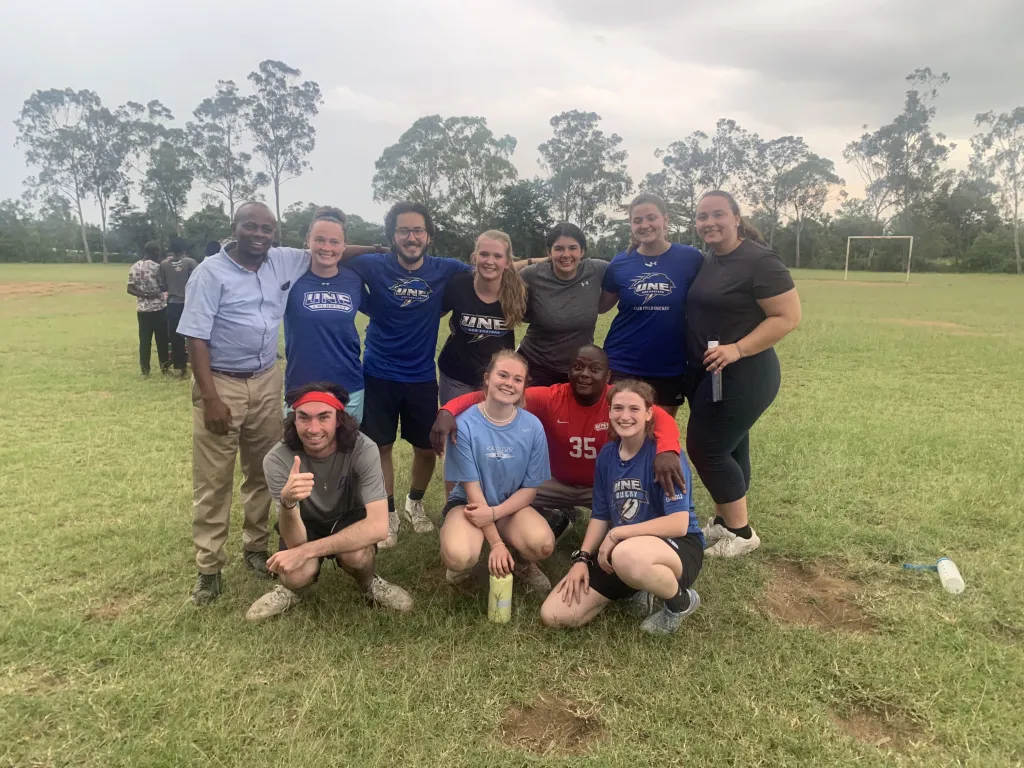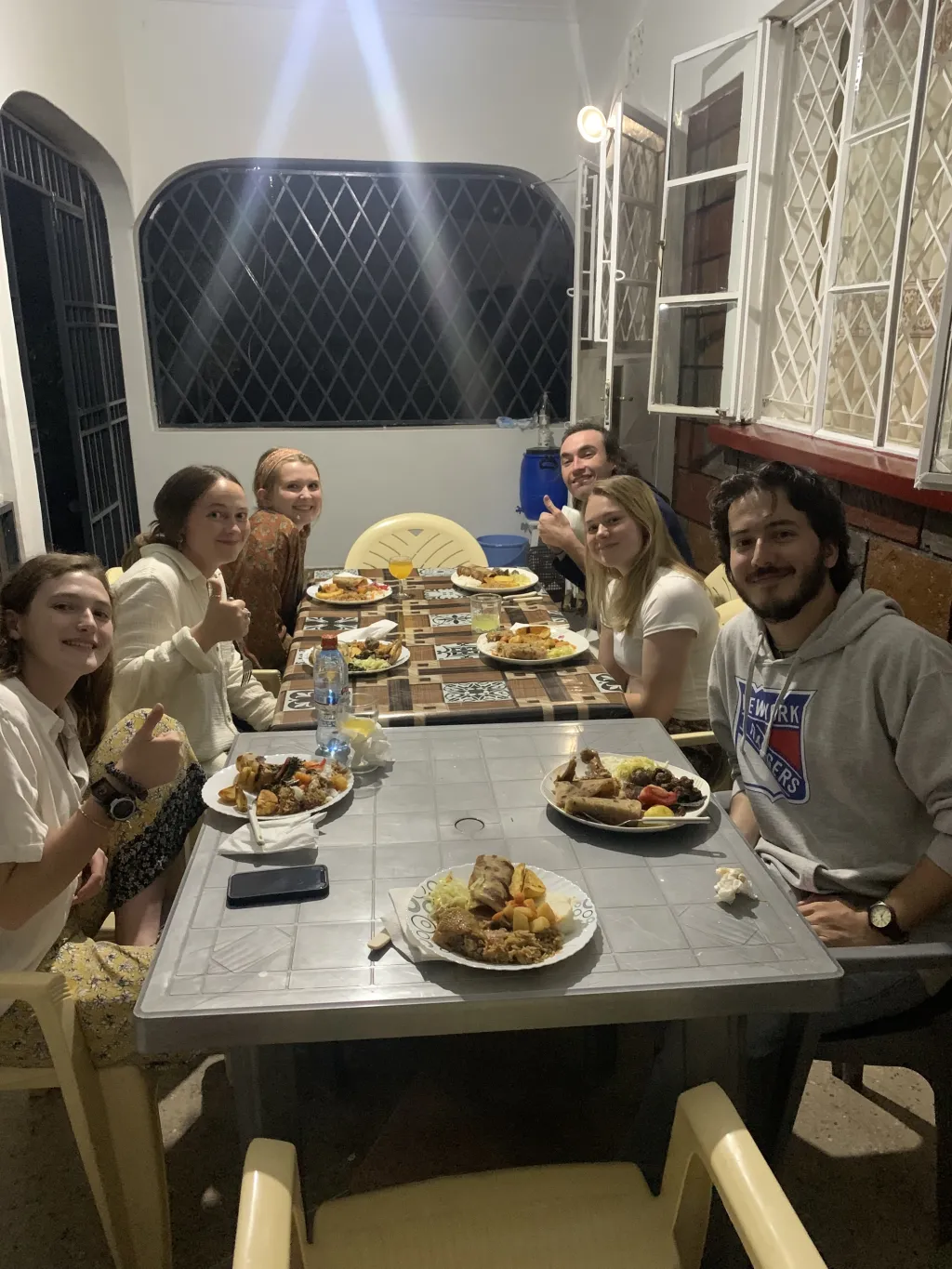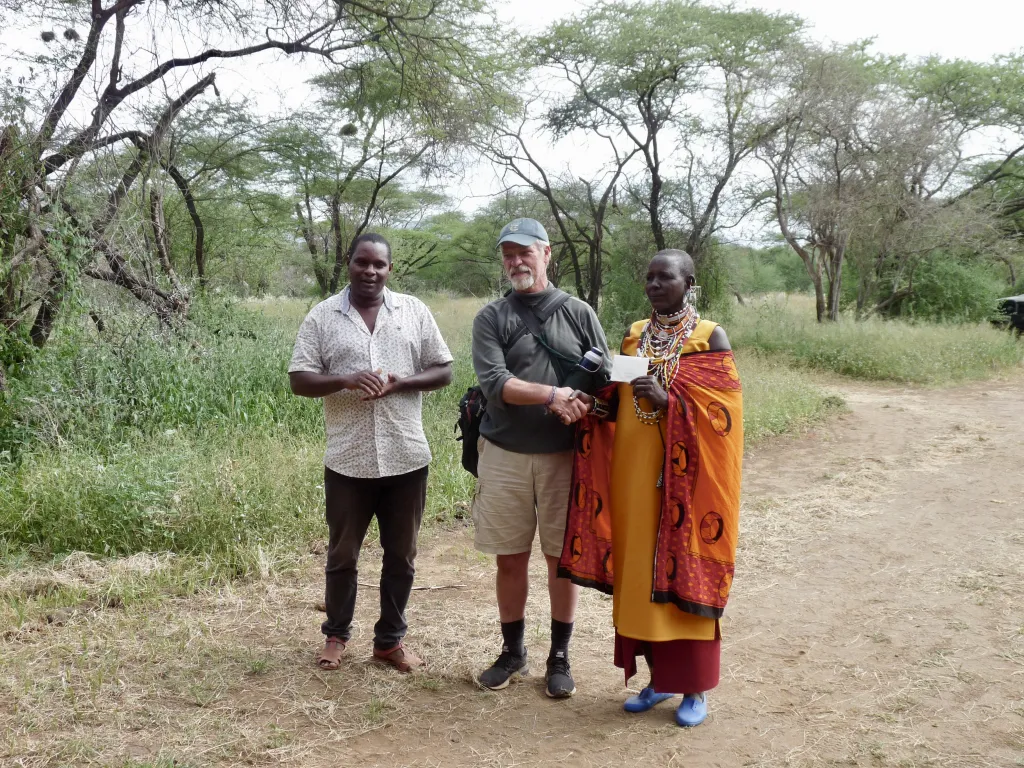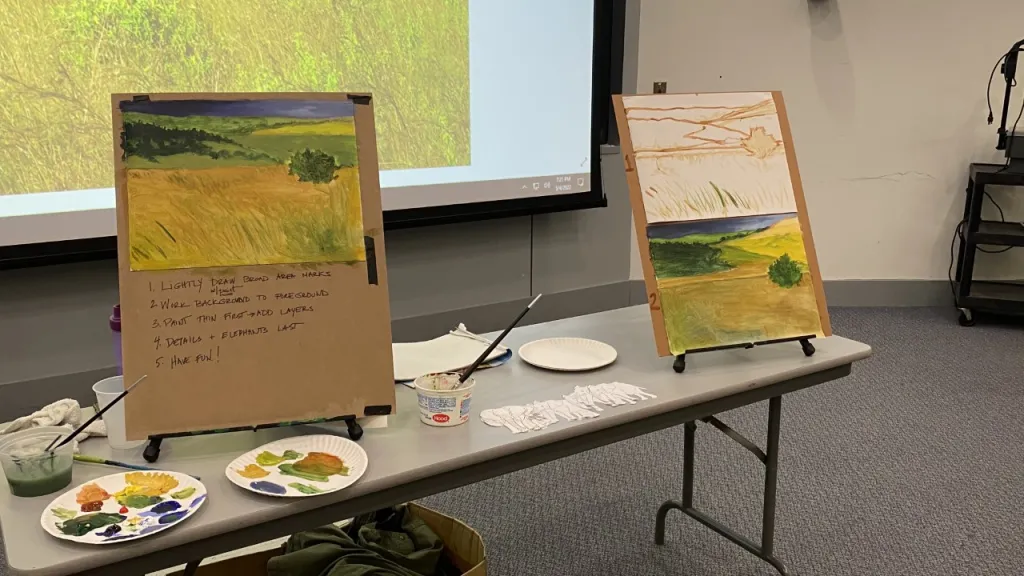Students gain new perspectives on conservation and culture in Africa during trip to Kenya

Richard Peterson, Ph.D., professor in the Environmental Studies Program, is no stranger to Africa. He was born and grew up in the Democratic Republic of the Congo. Now, he shares the wonders of his home continent by bringing his environmental students there. Peterson, assistant leaders Bethany Woodworth, Ph.D., teaching professor, Sandra Larned, former coordinator of the Global Education Program, and 11 students recently returned from a three-week trip to Kenya.
“This is the sixth time I’ve taken students,” Peterson commented. “I did all my research back in Congo and I began traveling to Kenya in the 1980s.”
Nicole Corriveau, B.S. ’22 (Environmental Science), was one of the students in Peterson’s class, Environment, Health and Community Development in East Africa. She wanted to go on the trip to explore a new environment and to learn how other communities address environmental issues.
“I wanted to explore new ecosystems and learn about the intersection of community development, health, and environmental challenges, which is extremely relevant to my studies,” she explained.
While in Kenya, Peterson and the students worked with four nongovernmental organizations, including ones that provide environmental education programs for area youth and ecotourism projects in Kenya's Kakamega rainforest; worked to combat severe soil erosion on the slopes of the Lake Victoria Basin; conducted community-based conservation, research, and education in Kenya's South Rift region; and engaged community health promoters to promote health and door-to-door sales of health and hygiene products in western Kenya's Lake Victoria region.
“The course was designed to really focus on the intersection of three areas: environment, health, and community development,” Peterson stated. “We focused on the nonprofit organizations in Kenya and the people who are working so very hard to make those situations better.”
Before leaving on the trip, Corriveau was hoping she would learn more about the different ways people in Kenya address social and environmental issues.
“I did learn more about that, but environmental solutions were often multi-faceted and included health solutions too,” she said. “Health issues and environmental issues can require simultaneous solutions because human health and environment are intimately connected.”
Typically, Peterson and his students would stay with families in Kenya during these trips. But lingering concerns over COVID-19 did not allow that on this journey.
“It was disappointing because that is such a powerful way for students to really learn from living with a family,” Peterson commented. “However, we were invited to several dinners with the families.”
“Personally, I was a little nervous about meeting so many new people along the way,” Corriveau said. “But this proved to be the easiest part. Everyone we met was extremely welcoming and gracious. The idea that stuck with me is the social importance of gathering around drinks and food. During our trip, we experienced the kinship society many Kenyans are proud of. Immediately, I started to note the contrasts between strong family ties in Kenya and the more individualistic society at home.”
One of the highlights of the trip was a mini symposium where the students made presentations about some of the environmental and health issues that they are facing back home. The Kenyan students also gave presentations on some of the same types of environmental and social challenges they are dealing with.
Before the trip, the students held several fundraisers. While in Kenya, they donated $700 to each of the four organizations they worked with, and they gave textbooks to two universities.
“The students on the trip this year really clicked,” Peterson said. “They really got along and developed some very strong relationships.”
As a recent graduate, Corriveau says she will take lessons learned from the trip with her as she moves on to the next phase of her life.
“This trip has exposed me to different methods of environmental protection, especially when it comes to living in the area you want to protect,” she stated. “It certainly changed my perception and I now believe that community development and environmental conservation can happen at the same time.”

At Soccer for Environment game

Dinner at host's home

Richard Peterson delivers donation

Paint night fundraiser at UNE